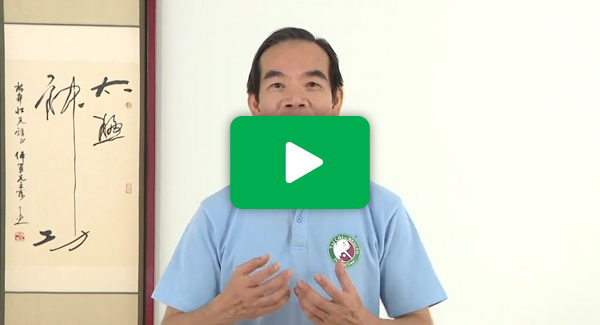Exercises to Engage Mind and Body
Yoga, tai chi, qigong and other exercises can ease pain, stress and more for people with arthritis.
By Emily Delzell
All mind-body practices aim for the same goal: the cultivation of mindfulness, which experts often define as “paying attention on purpose.” As the term “mind-body” suggests, the pay-off of this purposeful attention is twofold.
Practices like yoga and tai chi can create many positive physical effects, including improved balance, strength and flexibility. Yet, for people with chronic pain conditions like rheumatoid arthritis (RA), the biggest benefits seem to come from the mind component, specifically a shift in how they perceive themselves and their symptoms, says Heather M. Greysen, RN, NP, PhD, a nurse practitioner at the VA Medical Center in Philadelphia.
“Training the mind to pay attention to certain things — and to not pay attention to certain things — helps people cope with pain and other symptoms,” she says. “Processing symptoms and our thoughts about them with acceptance and less judgment puts you in control of your feelings and increases the confidence that one can cope with those experiences.”
Here’s the low down on four mind-body exercises that can quiet pain, build strength and improve your confidence to manage the ups and downs of living with arthritis.
Yoga
What it is: Yoga combines standing, sitting and reclined postures with breathing and meditation techniques. There are hundreds of postures and dozens of styles, from super-gentle restorative yoga to challenging types such as hot yoga and ashtanga that emphasize strength and endurance. Most involve holding a series of still postures, though in some styles, like vinyasa, practitioners flow from pose to pose.
What the science says: Yoga is one of the best-researched mind-body exercise for arthritis, though many studies are small and participants are often practicing different yoga styles. Results show yoga reduces pain, stress, disability, fatigue and depression; lowers disease activity and markers of inflammation; and improves grip strength, sleep, mood and general health.
Yoga may also help stave off disability that interferes with steady employment. Greysen’s most recent study on yoga and RA, published in 2019 in Holistic Nursing Practice, found that people who practiced various styles of yoga had better overall physical function and were more likely to work full-time compared with their non-yogi peers.
Tai Chi
What it is: Tai chi combines deep breathing with gentle, slow-flowing postures that relax the mind and strengthen and stretch muscles and ligaments. Like yoga, there are different styles that can be practiced while walking, standing or sitting.
What the science says: The handful of studies of tai chi that involve people with arthritis show a host of benefits. These include increased range of motion, improved muscle strength, flexibility, balance, cardiovascular fitness and quality of life as well as reduced pain, stress, inflammatory markers and disease activity.
Tai chi may help people with arthritis by “decreasing stress and causing the release of endorphins (‘feel good’ hormones that reduce pain and boost feelings of euphoria) that decrease perceptions of pain and create a sense of well-being,” says Gülseren Akyüz, MD, professor of medicine in the Department of Physical Medicine and Rehabilitation at Marmara University School of Medicine in Istanbul, Turkey.
Qigong
What it is: Qigong (pronounced “chee gong”) originated about 2,000 years ago in China, where it is prescribed by physicians to ease the symptoms of arthritis, high blood pressure and insomnia. Its many styles integrate breathing exercises, meditation, visualization and gentle body movements.
“Qigong exercises are safe even for those who are frail or confined to bed with appropriate modifications. They reduce fatigue and heighten energy, and are non-strenuous, self-paced and designed to protect internal organs and joints,” says Ray Marks, EdD, clinical professor and director of the Center for Health Promotion in the Department of Health and Human Performance at the City University of New York.
What the science says: Marks, whose research focuses on the use of safe physical modalities for alleviating arthritis pain and disability, published a review in Medicines in 2017 of 16 studies of qigong for arthritis.
“A major benefit of the consistent practice of qigong is pain reduction,” she says. “Another is its positive effect on reducing stress, depression, anxiety and low personal confidence. Additional observed benefits in people with various forms of arthritis are improved immune system health, sleep quality, balance and agility, and interest in life — all possible factors that can impact pain positively.”
She also found data showing regularly practicing qigong enhances posture, joint alignment, bone health, endurance, strength and walking ability.
Walking Meditation
What it is: Sometimes called contemplative walking, walking meditation involves slow, deliberate walking while noticing the components of each step and focusing your attention on your breath and other bodily sensations normally taken for granted. Ideally, it’s done in a quiet, natural environment like a wooded trail or an enclosed area.
What the science says: Walking meditation is part of a program called Mindfulness-Based Stress Reduction (MBSR) developed at the University of Massachusetts and offered at many hospitals. More than 20 studies show the eight-week MBSR program, which includes at least 10 minutes of daily walking meditation, improves physical symptoms, including pain, as well as psychological well-being in people with physical and emotional conditions.

Stay in the Know. Live in the Yes.
Get involved with the arthritis community. Tell us a little about yourself and, based on your interests, you’ll receive emails packed with the latest information and resources to live your best life and connect with others.


